Latest News
Wishing You a Sweet, Happy, and Healthy New Year
Posted by on September 23, 2014 at 9:00 AM EDTShanah Tovah from the White House! On Wednesday evening, Jews in the United States and around the world will begin celebrating Rosh Hashanah, the Jewish New Year.
The High Holidays offer the Jewish community a moment of pause, a time to reflect on the previous year and recommit to the unending task of Tikkun Olam, repairing the world. Together, working with people of all faiths, we can bring greater peace and prosperity to the world in 5775.
In his 2014 video message for the High Holidays, President Obama extends his wishes for a sweet new year and discusses why this time of year is so significant.
Read the remarks:
Hello. As Jews across America, Israel, and the world gather together for the High Holidays, Michelle and I extend our warmest wishes to you and your families for a sweet and happy new year.
My good friend Elie Wiesel once said that God gave human beings a secret, and that secret was not how to begin but how to begin again. These days of awe are a chance to celebrate that gift, to give thanks for the secret, the miracle of renewal.
In synagogues and homes over the coming days, Jews will reflect on a year that carried its shares of challenges. We’ve been reminded many times that our world still needs repair. So here at home we continue the hard work of rebuilding our economy and restoring our American dream of opportunity for all. Around the world, we continue to stand for the dignity of every human being, and against the scourge of anti-Semitism, and we reaffirm the friendships and bonds that keep us strong, including our unshakeable alliance with the State of Israel.
So let’s approach this new year with new confidence and new hope. Let’s recommit ourselves to living out the values we share as individuals and as a country. Above all, let’s embrace this God-given miracle of renewal, this extraordinary opportunity to begin again in pursuit of justice, prosperity, and peace. From my family to yours, shanah tovah.
Learn more aboutHispanic Heritage Month: Celebrating our Raíces and Shared Culture with Latin America
Posted by on September 22, 2014 at 9:15 AM EDTThe following Op-Ed by Katherine Vargas was published in El País, and can be read in Spanish HERE.
Last week marked the beginning of Hispanic Heritage Month, a time to honor the rich heritage of the Latino community and celebrate its countless achievements. It is also an opportunity to celebrate the familial, cultural and economic ties that so many Americans share with Latin America.
Latin America is booming; it is a region that is proudly carrying forward on a journey toward becoming middle-class, secure, and democratic for the first time in its history. The policies of the Obama Administration are designed to enhance and support this trend. Throughout the Americas, we are engaged in a common cause to strengthen citizen security and democratic institutions, expand economic opportunity and prosperity, promote social inclusion for all, including vulnerable populations, and develop a clean and secure energy future while working together to address climate change.
The Western Hemisphere holds enormous potential —economically, politically, and socially—and the United States remains committed to working with partners to seize upon shared opportunities and address common challenges, including through the active pace of engagement by the President and Vice President.
We’re also focused on deepening the connections between our people through initiatives like “100,000 Strong in the Americas”, which is focused on expanding educational opportunity and exchange to build connections between the people of the Americas, and to make our region more competitive. President Obama launched 100,000 Strong in the Americas to meet the target of bringing 100,000 students to the United States to study each year, while also increasing the number of Americans studying abroad in the hemisphere to 100,000. He did so out of a belief that greater educational opportunity and exchange will serve the interests of all our countries – developing new skills, increasing employment opportunities, building bridges across borders, and ultimately improving relations between the United States and our neighbors.
Just last week at the start of Hispanic Heritage Month, the White House hosted the first U.S. Agency for International Development (USAID) Inclusion Ambassador, Latin pop and vallenato singer/song writer Carlos Vives for a visit. In this role, Carlos works to promote social and economic inclusion of Afro-Colombian and indigenous communities in Colombia helping the country to overcome decades of conflict and move towards peace. The partnership builds on USAID’s decade-long effort to support Afro-Colombian and indigenous communities to promote their inclusion, rights, and economic opportunities.
Today, tens of millions of Americans trace their origins back to Latin America. Millions of workers are earning a living from good jobs made possible by the trade between our nations. The United States is a more prosperous and more diverse country thanks to our partnerships with our southern neighbors. The President, Vice President, and the entire Administration will continue to build on our common heritage, our economic relationship and our shared values to enrich the lives of all our people.
Learn more aboutNominate a White House Champion of Change for Strengthening the Economy through Citizenship
Posted by on September 19, 2014 at 1:58 PM EDTAll across the United States, immigrant workers make up the backbone of many small, large, and emerging businesses. Immigrant workers bring their skills and talent to the broader American workforce, and many businesses understand that by investing in their immigrant workforce they are also investing in their overall productivity. Our country is stronger and our businesses are stronger when everyone has a stake. As a result, some businesses have begun providing assistance to qualified employees with the citizenship process. Citizenship offers individuals the chance to become full participants in the American workforce, helping to improve the economy and their communities.
We would like to recognize these efforts so today, we’re asking you to help us identify and honor these leaders who are strengthening their businesses and the workforce by helping immigrants through the citizenship process. These extraordinary leaders will be invited to the White House to celebrate their accomplishments and showcase their actions to amplify the lesson that helping immigrant workers become citizens is not just compassionate but also good business. Please nominate a Champion of Change by midnight on Tuesday, September 30, 2014. Nominees may include the following types of individuals:
- Small business owners who provide civic lessons and workshops to employees.
- Managers within large or medium-sized businesses who provide English language lessons to employees.
- Company owners who provide citizenship information to employees.
- Labor Unions working with employers to provide access to citizenship services.
Click on the link below to submit your nomination (be sure to choose Strengthening the Economy through Citizenship in the "Theme of Service" field of the nomination form).
Nominate a Strengthening the Economy through Citizenship Champion of Change
We are looking forward to hosting this event and to highlighting the incredible work that businesses across the country are doing to strengthen our workforce, economy, and country.
Julie Chavez Rodriguez is Deputy Director of the Office of Public Engagement.
Learn more about ImmigrationJennifer Molina’s I’m Covered Story: Taking Control of My Health
Posted by on September 18, 2014 at 5:40 PM EDT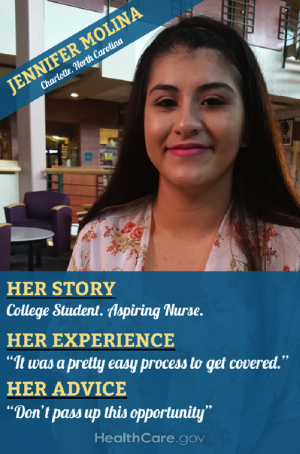
You can read this story on HHS.gov, HERE.
Between my college studies and working to pay for my education, my life is pretty busy. I don’t have time to be sick. But illnesses don’t care about schedules, as I found out this winter.
They also don’t care what’s in your bank account. I couldn’t get health insurance through my sales job, I couldn’t afford it through my school, and getting it on my own was way too expensive. Prices were outrageous.
So when I got really sick, I decided I had no choice but to wait it out. Medical care is too costly when you’re paying for it on your own. I took over-the-counter medicines, but they could only do so much.
As a student who wants to become a nurse, I knew that taking care of my health needed to be a higher priority. So I checked out the Health Insurance Marketplace and got help from a navigator who ran through various plans and benefits with me and explained deductibles and premiums.
Because of the Affordable Care Act, I was able to choose the coverage that was right for me. My new plan costs only $21 a month after tax credits.
And I’m not the only one who was able to find an affordable plan. Millions of Americans have already enrolled in affordable, quality health coverage through the Marketplace.
With the help of the navigator, I found it was a pretty easy process to get covered. I tell my friends: Just look into it. Don’t pass up this opportunity.
When I first started looking, I thought it wasn’t going to be affordable for me, but I was wrong. I’ve since learned that nearly 7 in 10 people who signed up for plans with tax credits through the federal Marketplace got covered for $100 a month or less. Like me, nearly half were able to get covered for $50 a month or less. This is particularly important to the well-being of my friends and family, because Hispanic-Americans are more likely to be uninsured than any other racial or ethnic group.
You can sign up at HealthCare.gov, or in Spanish at CuidadoDeSalud.gov when open enrollment begins again on November 15. Folks with special circumstances, like people who have lost job-based insurance, gotten married or aged off a parent’s plan at 26, may qualify for a special enrollment period, allowing them to enroll in a Marketplace plan before November. And if you are eligible for Medicaid or CHIP, you can enroll at any time.
You can also contact the Marketplace Call Center -- 1-800-318-2596 (TTY: 1-855-889-4325 – anytime, day or night, and get assistance in English or Spanish or any of 150 languages.
For me, health insurance means peace of mind and being able to feel safe. Thanks to the Marketplace, I don’t have to worry about what to do when I’m ill. I know that I’m covered at any time, any place.
Puerto Rico Makes Important Strides To Support Vaccine Research to Combat HIV
Posted by on September 18, 2014 at 12:42 PM EDTThe Obama Administration is a strong partner in helping Puerto Rico to develop the industries that will support its long-term economic growth. One such opportunity is to work through the President’s Task Force on Puerto Rico to identify opportunities can work more closely with partners to ensure that Puerto Rico’s best days are ahead.
Earlier this week, Governor Alejandro Garcia Padilla of Puerto Rico announced a collaborative effort to develop a vaccine to combat the spread of HIV, the virus that causes AIDS between the University of Puerto Rico (UPR), the National Institutes of Health (NIH); the Puerto Rico Science, Technology and Investigations Trust, and the Puerto Rico Industrial Development Co. (PRIDCO). This collaborative effort links Puerto Rico’s formidable biologics industry expertise, academic biomedical research, and a long history of HIV studies and proven experts trained in Puerto Rico, with the experience of NIH in their tenacious global effort to stop the spread of HIV/AIDS.
While at the White House Office of National HIV/AIDS Policy (ONAP) I authored a 2012 New Year’s message titled Persistence, Promise and Hope for the End wherein I highlighted an announcement that Science —one of the world’s leading scientific research journals—had chosen the HPTN 052 study, an HIV-related clinical trial, as its 2011 Breakthrough of the Year. The editors noted that they chose the study “because of HPTN 052′s profound implications for the future response to the AIDS epidemic.” I was inspired a month earlier, on Worlds AIDS Day 2011, as I sat in the audience mesmerized as President Obama, joined by former Presidents Bush and Clinton (via video link) and a multitude of world leaders, proclaimed a global effort to mark the beginning of the end of AIDS – a notion that for many years and for too many patients and family members, seemed faraway. The conversation that many of us had had about HIV/AIDS had turned from years of despair to one of hope.
That same year, the President’s Task Force on Puerto Rico issued its report to the President with a series of recommendations for building competitive industries and enhancing economic development. One key recommendation was to support the creation of the Caribbean’s Health Science and Research Center (Science City) on the island: “Puerto Rico has many of the infrastructure elements necessary to develop a regional health and research cluster as an engine for economic development. The Task Force’s recommendation to create a health science and research center helps meet both the health and economic challenges confronting Puerto Rico.”
Governor Padilla’s announcement this week and the President’s call to action on World AIDS Day 2011 is the fusion of two universes that help to spur important progress towards combating HIV/AIDS. The notion that Puerto Rico may progress through its academic strengths and biologics industry expertise, not only to promote its own economic development and growth in health and research sciences, but to join our Federal partners in NIH to stop the spread of HIV and ultimately defeat AIDS is extraordinarily hopeful.
The Obama Administration, through the ongoing work of the President’s Task Force remains dedicated to being a strong partner in helping Puerto Rico achieve this important goal. In the months ahead, the Task Force, which consists of diverse group of federal staff from across various agencies, will continue to take actions that complement local efforts to promote job creation, education, health care, clean energy and economic development in Puerto Rico.
A Journey into the Unknown
Posted by on September 15, 2014 at 5:54 PM EDT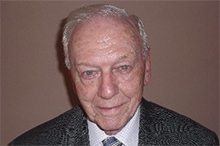
Frank Lowe is being honored as a Individual and Community Preparedness Champion of Change.
While it is an honor to be named a Champion of Change, I know that this would not be possible without the effort and contribution of so many who have supported me.
After I retired from my first career, I knew I needed to find a way to be useful to my community. Fortunately, the New York City Office of Emergency Management (OEM) was looking for someone to focus on the senior population of the city and hired me as a consultant. Faced with the task of effectively reaching out to over a million seniors, it didn’t take long for me to realize this was not a one man job. Fortunately, there were so many others who were eager to offer advice and help in preparing seniors to respond to emergencies.
Six years ago, I was added to the staff at OEM as Senior Outreach Specialist. In this position, I was able to implement some of the things I had after engaging seniors and giving presentations on emergency preparedness in all the five boroughs. This one-on-one contact taught me that, while many were reading our brochures on making emergency plans, few had actually followed the advice offered in those brochures. While discussing this problem with my colleagues, I proposed an interactive workbook to guide seniors through the process of preparing for emergencies and disasters. After a year and a half of research and development, MY EMERGENCY PLAN was born. MY EMERGENCY PLAN is an emergency preparedness workbook, and it has proven to be incredibly popular not only with the seniors but also with other age groups. It has become our flagship emergency preparedness guide and is now available in print in 13 languages and online in 22 languages.
Yet, I knew that there were still populations that MY EMERGENCY PLAN wasn’t reaching, particularly those confined to their homes and those who cannot see. To reach out to the homebound, I engaged the Visiting Nurse Service of New York and Meals on Wheels, and they helped distribute 17,000 copies of our brochure. As for the blind, we recorded each of our guides and distributed them on tapes and CDs to organizations that work directly with this constituency, such as Lighthouse, the Helen Keller Institute, Jewish Guild for the Blind, and Visions. The work to prepare our communities never ends, and there will be challenges on this ongoing journey. But each challenge proves to us that there is much more to learn—and much more to do.
Frank Lowe is a Senior Outreach Specialist for the New York City Office of Emergency Management. He oversees Ready New York, a campaign to encourage New Yorkers to ready themselves for emergencies.
All Hands on Deck! Innovation and Engagement in Mississippi’s Youth Preparedness through MyPI
Posted by on September 15, 2014 at 5:51 PM EDT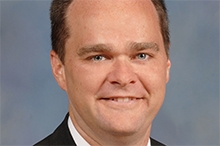
Ryan Akers is being honored as a Individual and Community Preparedness Champion of Change.
As a member of the faculty at the Mississippi State University Extension Service (MSU-ES), I am able to unite two passions of mine: emergency preparedness and the mentoring of youth. This position has provided me with abundant opportunities to enhance emergency preparedness across the state of Mississippi, addressing areas ripe for improvement and engaging individuals, families, and communities in emergency preparedness. My research background centers on college and university emergency management and the effects of trauma on college students, so I set my sights on youth preparedness research, program development, and advocacy.
The Mississippi Youth Preparedness Initiative (MyPI) is a comprehensive teen-centric preparedness program. It is different from other programs across the country because it has a curriculum, leadership and service opportunities, and career planning services, allowing for enhanced preparedness levels for approximately 25,000 families each year.
At the end of the 20th century, approximately 66.5 million children were affected annually by disasters. To prepare for natural disasters, we need a more informed population, including our youth, and a focus on roles youth can play in emergency preparedness. At MyPI, we believe that teens can play an important role in preparing our communities for disasters. In recent years, we have experienced the destructive forces of tornadoes, hurricanes, and flooding. We are keenly aware of the destructive powers of Mother Nature, but preparedness is still lacking, especially in our rural communities. The MSU-ES and Mississippi Citizen Corps created a dynamic partnership to address these shortfalls through outreach.
The DHS/FEMA-approved Teen Community Emergency Response Team (CERT) training provides us with foundational knowledge in our curriculum. One unique aspect of MyPI is the addition of CPR/AED certification, a technology track, and a career track, which allows our students to gain specialization in their area of interest. The technology track includes awareness programs for HAM radio, NOAA weather radio, smart phone apps and social media, and smoke alarms. The National Weather Service also provides extreme weather awareness programming, and Mississippi Citizen Corps provides a disaster simulation. The career track focuses on emergency management, fire service, and public safety. Individuals from each local agency explain the field, entry requirements, and answer questions. The leadership and community service capstone project, PREP + 6, is the defining piece of MyPI and allows us to reach further into communities. Throughout MyPI, every student works with their family plus six others to develop emergency supply kits and family communication plans. At the conclusion of MyPI, every participant directly enhances the individual and family preparedness of seven families in their community.
As a native Mississippian and advocate for youth preparedness, it is incumbent upon me to close gaps in preparedness across our state. Our goal is to establish a new standard for youth preparedness because that will improve the safety and security of families and communities. Together, the MSU-ES and Mississippi Citizen Corps are working aggressively to promote preparedness by empowering our teens to take a leadership role within their families and communities.
Dr. Ryan Akers is an Assistant Extension Professor with the Mississippi State University Extension Service focusing on Community Preparedness and Disaster Management. Dr. Akers also serves as the Coordinator of the Mississippi Youth Preparedness Initiative.
Massachusetts Whole Community Planning and Response Efforts
Posted by on September 15, 2014 at 5:40 PM EDT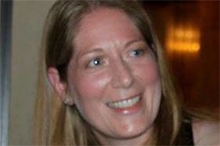
Samantha Stone is being honored as a Individual and Community Preparedness Champion of Change.
Being selected as a White House Champion of Change is an honor but not a distinction that I alone should hold. I am one person amongst a dedicated team of state government employees who are committed to promoting, protecting, and preserving the health and well-being of all people in the Commonwealth of Massachusetts, particularly those individuals and populations most vulnerable, from public health and medical emergencies, threats, and disasters.
As a member of the Office of Preparedness and Emergency Management (OPEM) at the Massachusetts Department of Public Health, I am charged with collaborating with a variety of partners and stakeholders to ensure that our public health and healthcare systems, as well as individuals and communities, have the knowledge, plans, and tools to prepare for, respond to, recover from, and mitigate the impact of these often unplanned and devastating events.
At OPEM, I oversee Show Me, a series of three communication tools meant for use by public health and emergency management personnel, volunteers, and individuals with communication challenges during a variety of emergencies. One tool is paper-based, and the other two are free mobile apps. The tools are intended for use in emergency shelters, emergency dispensing sites, and family assistance centers. At the foundation of these projects is a user-centered design: we worked closely with individuals with communication challenges so that they, as end users of the tools, became co-creators by taking part in each stage of the tools’ design, development, and creation. This is an inclusive, participatory process that focuses on users’ abilities, desires, and needs as they relate to using the final products. Instead of forcing end users to alter their behaviors to adapt to products we create, the products get created explicitly to meet the needs of end users.
Moving forward, much of our preparedness efforts will focus on developing more comprehensive, regional, and coordinated response to emergencies. OPEM is creating six regional Health and Medical Coordinating Coalitions (HMCC) within Massachusetts. As part of the establishment of HMCC, there was a year-long stakeholder engagement process that brought together representatives from acute care facilities, community health centers, emergency medical service providers, long-term care facilities, and local public health agencies. Emergency management and public safety partners are being brought into the fold as well. This shift towards HMCC embodies the core principles of whole community planning and response: coordinated and collective team efforts are best equipped to understand and meet the needs of a community.
The work that OPEM is doing on the creation of the HMCC, along with the Show Me tool set, is part of a larger departmental movement to focus on whole community and inclusive planning and response efforts as a means of engaging and empowering individuals to create a more resilient community. It’s a substantial challenge but one which we’re committed to meeting.
Samantha Stone is a Risk Communication Coordinator with the Office of Preparedness and Emergency Management at the Massachusetts Department of Public Health.
- &lsaquo previous
- …
- 21
- 22
- 23
- 24
- 25
- 26
- 27
- 28
- 29
- …
- next &rsaquo

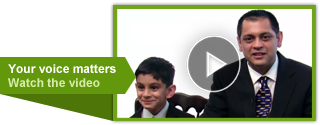
Twitter